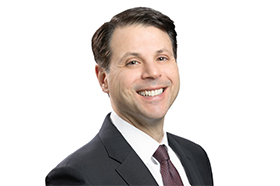Career paths can help firms satisfy their people
The performance of the stock market over the past 18 months has made this a difficult time to be an asset management employee. These individuals count heavily on strong returns to deliver a big bonus that can make up the majority of their compensation.
“In a challenging year, bonuses are typically lowered based on the asset managers’ overall economics, and in some cases the exceptional employees will receive non-cash compensation such as phantom equity,” said Michael Patanella, Grant Thornton LLP’s National Managing Partner for Asset Management.
The concept of a challenging year is reflected in the asset management-specific results of Grant Thornton’s 2023 State of Work in America Survey. Despite the limited number of asset management respondents to the survey, the prevailing trends portrayed in this workforce’s engagement and well-being responses highlight areas for improvement to enhance employee satisfaction.
Asset management employees ranked at least 10 percentage points behind the overall employee group in:
- Feeling their organization fosters a culture of well-being.
- Confidence that the organization would take action on an issue affecting their well-being or safety.
- Confidence that they will work for the same organization in a year.
The numbers demonstrate workforce trends that can be improved — if leadership takes the right approach. By providing clearly documented career paths, using technology to lessen the workload and improving diversity, equity and inclusion (DE&I), asset management firm leaders can satisfy many of their employees’ needs.
Hunger for advancement
Development and succession planning support talent management

“Companies will need to pivot their focus on job architecture to create career development paths and opportunities and much-needed transparency for employees.”
In the state of work survey, asset management employees listed advancement opportunities as the top reason they were attracted to their job and the top reason to stay. But there’s a danger that many of them won’t stay long, as just 47% said they clearly understand their growth and development opportunities (compared with 59% for the overall workforce).
“Companies will need to pivot their focus on job architecture to create career development paths and opportunities and much-needed transparency for employees,” said Margaret Belden, a Director, People and Organization for Grant Thornton.
“The solution requires development, planning and transparency so employees understand what is available to them to aid their decision to join or leave.”
Patanella paints this as an issue of vital importance as asset management leadership works to keep its most coveted people from leaving. He said asset management can be a demanding profession, as many people regularly spend 50–60 hours a week in the office, doing everything in their power to help clients improve their financial position.
As the majority of an asset manager’s compensation often comes in the form of meaningful bonuses when clients’ money grows fast, the long working hours can be rewarding financially when the stock market is rising. But when stocks are performing poorly, the bonuses evaporate quickly and employees may question why they’re putting in all those hours.
A clearly laid out succession plan that shows employees a clear path to advancement can keep them motivated when the bonus compensation is meager.
Patanella highlighted that throughout the pandemic, individuals have experienced the loss of loved ones and reconsidered their work habits. Notably, this shift in work patterns extends beyond younger employees, as senior professionals are also affected, demonstrating a widespread impact across all age groups.
Showing these employees precisely how this work can lead to advancement provides an important reward for their efforts.
Employee advancement essentials
Your plan should include these four elements:
- A leadership assessment scorecard that captures strengths and opportunities across competencies and skills required for advancement
- Action plans that focus on specific areas to prepare leaders for emerging roles and opportunities
- Periodic health checks to evaluate progress and pivot as needed
- A succession planning process and deliverables that highlight objectives that are ready now, needed urgently, ready in one to three years and ready in three to five years
Related resources
REPORT
ARTICLE
Remember the pandemic lessons
Technology can be a problem solver
Two significant trends that were accelerated in many industries during the COVID-19 pandemic were the adoption of new technology to make work easier and a shift toward remote working.
Implementing technology remains a particularly useful option to current workforce challenges, according to Patanella. He said leaders in the industry continue to improve by leaps and bounds in their ability to use technology to share and review data; collaborate with colleagues and clients; and make presentations.
Hedge fund and private equity employees in particular are taking advantage of this technology, Patanella said. This can reduce travel time, saving both dollars and wear and tear on employees.
Four in 10 asset management employees agreed that they had experienced burnout on the job in the past year, according to this pie chart using data from Grant Thornton LLP’s State of Work in America Survey. Note that the asset management sample size in the survey was limited.
The state of work survey shows room for improvement there, as just 47% of asset management respondents (compared with 55% overall) said their current technology platforms allow them to maximize their work output and overall efficiency. This may be leading to burnout, which was reported by 40% of asset management employees compared with 36% overall.
“I do think an answer to some of this is technology and automation,” Patanella said. “You have to double down or take a second look at the limited technology you’re using compared to your peers.”

“An answer to some of this is technology and automation. You have to double down or take a second look at the limited technology you’re using compared to your peers.”
Remote or hybrid work, however, isn’t seen to be as helpful in asset management compared with other industries. Just 43% of asset management respondents (compared with 59% overall) said hybrid work has made a positive impact on their organization’s culture.
This partly stems from a hard-driving culture in which many employees are expected to be in the office.
Some asset management employees also would rather be in the office for the peer-to-peer interactions that can help them learn and grow. Hybrid opportunities may be more prominent at smaller firms and for jobs that are not client facing, but remote work often isn’t available in asset management.
“This is an industry that traditionally requires more face time, and employees in this industry understand that is a condition,” Belden said.
Explore workforce topics in other key industries
ARTICLE
ARTICLE
ARTICLE
ARTICLE
Catching up on diversity
Progress is urgently needed
It’s an understatement to say that the DE&I metrics at asset management firms don’t match what’s needed for an increasingly diverse investing public.
Research performed by the Knight Foundation in September 2021 found that just 1.4% of a sample representing $82 trillion of assets under management in the United States was managed by women or minorities.
Meanwhile, just 53% of asset management respondents in the state of work survey said their organization has a strong commitment to diversity, equity, inclusion and belonging. That’s far below the 64% reported by the entire state of work sample.
The diversity challenges in the industry extend to board representation and the companies in which asset managers choose to invest.
Fortunately, Belden said, there’s a lot that can be done to advance DE&I in asset management. She said many firms don’t have a strategy for such advancement, but they can develop one. Successful strategies may include the following tactics:
- Conducting outreach to diverse students and demonstrating what a career in asset management consists of and the impact of their work as early as high school
- Developing relationships with faculty to identify women and diverse students at community colleges and historically black colleges and universities (HBCUs)
- Creating mentorship and enrichment programs to help women and diverse talent develop and advance
- Actively recruiting women and diverse candidates for board positions to further promote diversity representation
“This is an area where a lot of advancement can be made,” Patanella said.
Looking ahead
Firms can build engagement
In addition to the potential for meaningful compensation, firm employees have the potential to help build wealth that can support retirement and meet other goals. Through their investments, asset management employees also have the ability to support successful businesses and drive capital markets.
The hours may be long, but there’s a lot of good that can be done by employees in the asset management industry. Firms can keep those employees engaged by providing a clear and transparent path to advancement, leveraging technology to improve efficiency and acting on DE&I as an opportunity to build relationships and business.
“It’s an ambitious, intellectually driven group of people that have high standards and ambitious goals that organizations will need to continue to respond to in order to attract, motivate and retain their talent,” Belden said.
Here’s how other key industries are making progress on ESG
Our asset management featured industry insights

No Results Found. Please search again using different keywords and/or filters.




Share with your network
Share